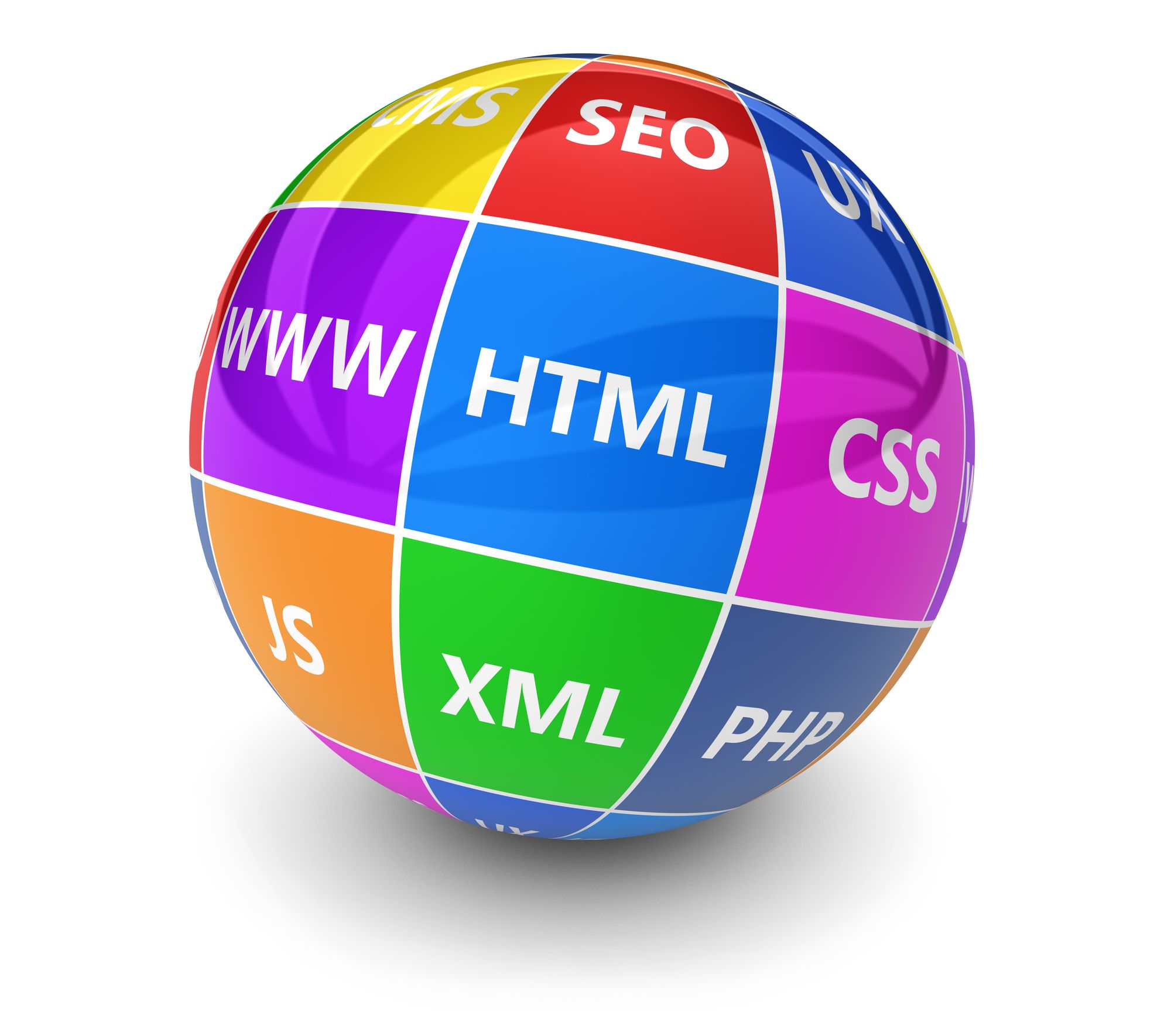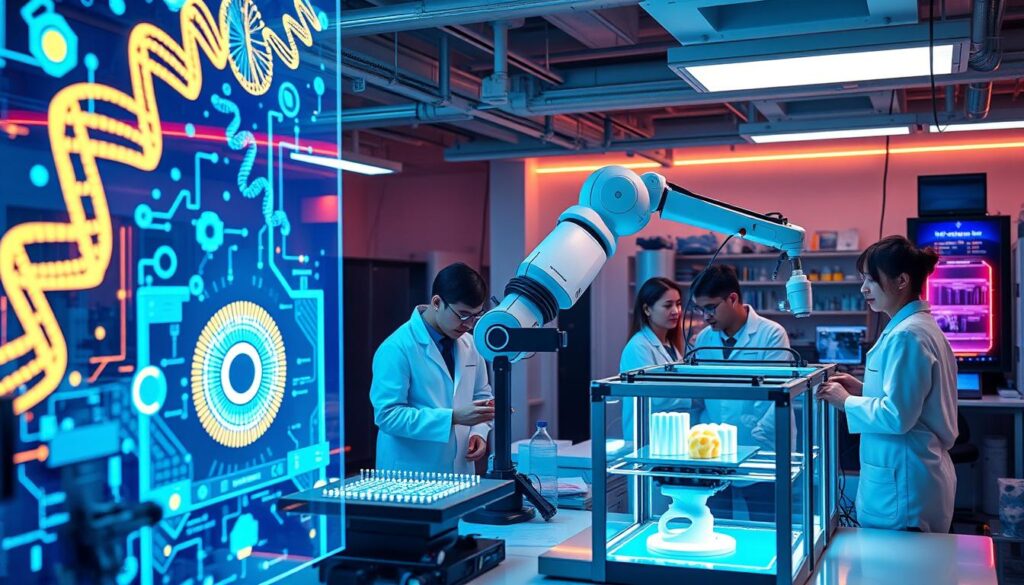כל יום, העולם שלנו משתנה בזכות מדע ו- חדשנות. ההתקדמויות הללו עושות יותר מאשר רק משפרות את החיים. הן פותרות בעיות עצומות שכולנו נתקלים בהן. בתחום הבריאות, טיפולים חדשים משפרים את הבריאות של החולים ומצילים חיים. בינתיים, גאדג'טים חדשים משנים את אופן התנועה שלנו ואת שימושנו באנרגיה. כל זה עושה את כדור הארץ שלנו ירוק יותר.
זו עת של שינויים מהירים, וחשוב להישאר מעודכנים. לדעת כיצד הרעיונות החדשים הללו עובדים יחד, זה עוזר לנו לראות לאן אנו נעבור. ה- תקדמות הזו עושה השפעה גדולה בתחומים רבים. והיא תמשיך לעצב את עתידנו בדרכים מדהימות.
מסקנות מרכזיות
- מדע ו- חדשנות הם חלק בלתי נפרד משיפור החיים היומיומיים.
- ה- תקדמות האחרונה טופלת באתגרים גלובליים קריטיים.
- התקדמויות בטיפול בבריאות משפרות את טיפול המטופלים ואת נגישותם.
- חדשנויות בתחבורה תומכות ב- קיימות
- פיתוחים באנרגיות מתחדשות משפיעים על פתרונות לשינויי אקלים.
- טכנולוגיות AI עוצבות תעשיות ואתיקה בחברה.
התפקיד של המדע בחיי היומיום
המדע עוצב משמעותית את חיינו היומיומיים, עוזר לנו לקבל החלטות במבוססות על שיטות מוכחות. הוא משתמש בהשיטה המדעית כדי לחקור ולהבין טוב יותר. דרך שיטה זו, אנו מגיעים למסקנות מבוססות על עובדות לשימוש היומיומי שלנו.
הבנת השיטה המדעית
ראשית, השיטה המדעית מתחילה על ידי שאלות על הסביבה שלנו. אז אנו עושים מחקר מפורט כדי לדעת מה כבר קיים. יצירת ההשערה מאפשרת לנו לנחש את התוצאות, שאנו בודקים באמצעות ניסויים. צפייה בניסויים אלה מביאה למסקנות שאו מאשרות את הניחושים שלנו. שלב אחר שלב זה מהווה חלק מרכזי בהתמודדות עם המדע שאנו נתקלים בו ביומיום.
דוגמאות למדע בפעילויות יומיומיות
הפעולות היומיומיות שלנו לעתים תמיד מראות כיצד המדע משמש. תבורכו בדוגמאות אלו:
- בישול: לדעת על תגובת מאייארד משפרת את הטעם והמראה של המזון.
- ניקוי: הכימיה מסבירה למה מוצרי ניקוי מסוימים עושים עבודה טובה יותר.
- טכנולוגיה: להבין כיצד הגאדג'טים עובדים משתמש בפיזיקה כדי להראות את השימושים בעולם האמיתי.
אלה הם רק כמה דוגמאות למדע בשגרת היום יום שלנו. הם מראים כיצד השיטה המדעית עוזרת לנו לקבל החלטות חכמות יותר בכל יום.
| פעילות | עקרון מדעי | השפעה |
|---|---|---|
| בישול | תגובת מאייארד | משפר טעם וצבע |
| ניקוי | כימיה | משפר את יעילות סוכרי הניקוי |
| טכנולוגיה | אלקטרוניקה | ממקסם את פונקציונליות ויעילות המכשירים |
מהפכות שמשנות את תחום הבריאות
השירותים הרפואיים משתנים במהירות רבה, בזכות טכנולוגיות חדשות שמשפרות את הטיפול ואת טיפוח המטופלים. שני שינויים גדולים הם טלרפואה ו-מעקב מרחוק. טכנולוגיות אלו שינו את הדרך בה מתחברים מטופלים ורופאים, במיוחד לאחר משברי בריאות אחרונים. הן משלימות להתקדמויות בטכנולוגיות רפואיות ששופרות את האבחון והטיפול במגוון רחב של תחומים.
טלרפואה ומעקב בריאות מרחוק
טלרפואה היא קפיצת מחץ בטכנולוגיית הבריאות. היא מאפשרת למטופלים לדבר עם רופאים באופן מקוון. זה נהדר לאנשים שחיים רחוק מבתי חולים או במקומות בהם יש מעט רופאים. הטכנולוגיה פורצת את המרחק שהיה קשה לקבל שירותי בריאות בעבר.
כלי מעקב מרחוק, כמו צמידי כושר ואפליקציות בריאות, מאפשרים לרופאים לעקוב אחרי בריאותך בכל עת. זה אומר שהם יכולים לפעול מהר אם משהו לא בסדר. זה דומה לכך שרופא שומר עליך, ללא קשר למיקום שלך.

התקדמויות בטכנולוגיה רפואית
טכנולוגיות חדשות ברפואה פותחות הזדמנויות לטיפול יעיל בבעיות בריאות. ניתוח בעזרת רובוט הוא דוגמה לכך. הוא מפחית את הפגיעות בניתוח, מה שעוזר למטופלים להחלים במהירות יותר. בינה מלאכותית, או AI, עוזרת באבחון מחלות על ידי ניתוח מהיר ויעיל של נתונים. טכנולוגיה זו משפרת את הטיפול הרפואי מכיוון שהוא מותאם אישית לכל אדם.
| טכנולוגיה | תכונה | יתרון |
|---|---|---|
| טלמדיצינה | ייעוץ וירטואלי | נגישות ונוחות מוגברות |
| מעקב מרחוק | מכשירי בריאות נישאים | מעקב בריאות רציני |
| כירורגיה רובוטית | טכניקות פוגעות במינימום | זמן החלמה ממוצע נמוך |
| אבחון בעזרת AI | ניתוח נתונים וזיהוי דפוסים | דיוק אבחוני משופר |
טכנולוגיה ועתיד התחבורה
טכנולוגיות התחבורה חיוניות לעתיד שלנו. רכבים חשמליים ורכבים אוטונומיים מובילים את השינוי הזה. הם עושים את הנסיעה ירוקה ויעילה יותר.
רכבים חשמליים וקיימות
רכבים חשמליים עוזרים במאבק בשינויי אקלים. הם מפחיתים פליטות זיהום רעילות. גופים כמו סוכנות האנרגיה הבינלאומית מציינים את השוק הגובר של רכבים חשמליים.
חברות כמו טסלה ופורד משקיעות בגדול בתחום זה. הן יועצות להפוך את התחבורה ליותר קיימת.
- הפחתת פליטות פחמן
- הפחתת התלות בדלק גולמי
- הפחתת עלויות הפעולה לצרכנים
רכבים אוטונומיים: עידן חדש של נסיעה
רכבים אוטונומיים משנים את אופן התנועה שלנו. הם מציעים כבישים בטוחים יותר, פחות מדוכאים וגישה קלה יותר. מנהלת בטיחות תעבורה בכבישים הלאומית מראה כיצד הם עשויים להפחית תאונות.
| תכונה | רכבים חשמליים | רכבים אוטונומיים |
|---|---|---|
| השפעה סביבתית | מפחית את רמות הפליטת פחמן | עלול להוריד את רמות התאונות |
| יעילות אנרגטית | יעילות גבוהה בשימוש באנרגיה | זרימת תנועה מותאמת דרך טכנולוגיה חכמה |
| זמינות | הגברת ייצור וזמינות | פיתוח עם תודעת קבלת החלטות לעתיד |
לחקור רכבים חשמליים ואוטונומיים מביא אותנו לעתיד של תחבורה ירוקה יותר. חדשנות כזו משנה את דרכי הנסיעה שלנו ועוזרת לכדור הארץ שלנו.
מעברים סביבתיים באנרגיה מתחדשת
צעדים אחרונים בתחום האנרגיה המתחדשת עוצבים את עתידנו. בעיקר, אנרגיית שמש ואנרגיית רוח נמצאות בחזית. הן מביאות פתרונות אנרגיה יעילים ונקיים לפגישת צרכינו. הצעדים הללו הם מרכזיים להלחם בשינויי אקלים.
חדשנות באנרגיית שמש ורוח
אנרגיית שמש ראתה צעדים ניכרים עם תאי פוטו-וולטאיים חדשים. התאים הללו עובדים טוב יותר ועולים פחות. לדוגמה, תאי שמש פרובסקייט הם מבטיחים מאוד. בצד הרוח, טורבינות כיום יש להן להן להן להן להן להן להן להן להן להן להן להן להן להן להן להן להן להן להן להן להן להן להן להן להן להן להן להן להן להן להן להן להן להן להן להן להן להן להן להן להן להן להן להן להן להן להן להן להן להן להן להן להן להן להן להן להן להן להן להן להן להן להן להן להן להן להן להן להן להן להן להן להן להן להן להן להן להן להן להן להן להן להן להן להן להן להן להן להן להן להן להן להן להן להן להן להן להן להן להן
השפעה על שינויי אקלים
אנרגיה מתחדשת היא מרכזית במאבק בשינויי אקלים. החלפת הדלקים הגולמיים באנרגיה שמשית ואנרגית רוח עוזרת לכדור הארץ. זה גם יוצר עבודות ומגדיל את הכלכלה בתחום הירוק.
| מקור אנרגיה | התקדמויות | יתרונות |
|---|---|---|
| אנרגיה סולארית | תאי סולארי פרובסקייט; מערכות פוטו-וולטאיות יעילות | יעילות גבוהה; עלויות ייצור נמוכות יותר |
| אנרגיה רוח | עיצובי טורבינות חכמים; להגדלת פלטות טורבינה | לכידת אנרגיה מוגברת; רגל פלטות אקולוגי נמוך יותר |
| אחסון אנרגיה | סוללות ליתיום-יון; מערכות אחסון משאבתיות | ספק אנרגיה אמין; שילוב טוב יותר של מקורות מתחדשים |

מדע וחדשנות בחקלאות
חדשנות בחקלאות היא מפתח לביטחון מזון גלובלי. חקלאות אנכית וחקלאות עירונית עומדות בתור מבטיחות. הן משתמשות במרחב בצורה חכמה ומפחיתות את שימוש המשאבים. שיטות חקלאות חדשות אלו עוזרות לערים לייצר מזון בקרבת מקום. הן מורידות עלויות התחבורה ומעודדות דרכים ידידותיות לסביבה.
חקלאות אנכית וחקלאות עירונית
חקלאות אנכית משנה את דרך החשיבה שלנו בנוגע לגידול צמחים. זה כולל עמידת צמחים בשכבות, בהגדרות שליטה. חקלאות עירונית אומרת לגדל מזון ישירות בערים. היא מהפכת אזורים לא משמשים, כמו גגות וחלקות ריקות, לחוות. שתי השיטות עוזרות לשפר את הספק של מזון מקומי, ומתמודדות עם ביטחון מזון.

אורגניזמים מודרפים גנטית (GMOs)
GMOs חיוניים להשגת ביטחון מזון. הם מיועדים לתוצאות טובות יותר ולעמידות נגד מזיקים. שימוש זה בטכנולוגיית הביוטק עוזר לחקלאות להסתגל לשינויי אקלים. GMOs מאפשרים לחוות לייצר יותר עם פחות חומרי גיהוץ. זה מציע בחירה אקולוגית וארוכת טווח לייצור מזון נוסף.
| נושא | חקלאות אנכית | חקלאות עירונית | GMOs |
|---|---|---|---|
| שימוש במרחב | שימוש יעיל במרחב אנכי | שימוש באזורים עירוניים לייצור מזון | לא רלוונטי |
| יעילות משאבים | שימוש מינימלי במים והפחתת עלויות הובלה | משפר את זמינות המזון המקומי | הפחתת שימוש בחומרי גילוי והגברת התוצאה |
| עמידות אקלים | סביבות שליטה מוחלטת מקלימה באפקטים האקלימיים | התאמה למיקרוקלימות עירוניות | שיפור עמידות למזיקים וסובלנות ליבוש |
השפעת המודעות המלאכותית על החברה
המודעות המלאכותית משנה במהירות רבה את התעשיות הרבות. היא מביאה לשיפורים רבים ומשפיעה על אופן פעולתם של דברים. היא מראה את כוחה בתחומים כמו בריאות, פיננסים וייצור.
המהפכות הללו מעלות את היציבות ומשנות את אופן קבלת ההחלטות.
יישומים של המודעות המלאכותית בתחומים שונים
כאשר המודעות המלאכותית משמשת בתחומים שונים, התוצאות מדהימות:
- בריאות: המודעות המלאכותית עוזרת לזהות מחלות וליצור תוכניות טיפול המתאימות בדיוק לכל מטופל.
- פיננסים: המודעות המלאכותית מאפשרת מסחר מהיר יותר, בדיקת סיכונים וגילוי הונאה. זה מפגין את פעולות הפיננסים בצורה בטוחה ויעילה יותר.
- ייצור: המודעות המלאכותית מנבאת מתי יהיה צורך לתקן מכונות. זה שומר על חלקת הייצור חלקה ומפחית פסקי חשמל בלתי צפויים.
התחשבות אתית בפיתוח המודעות המלאכותית
התפשטות השפעתה של המודעות המלאכותית מעלה דיונים אתיים חשובים. כמה נושאים מרכזיים הם:
-
אי ייצוגיות אלגוריתמית: קיימת דאגה שהמודעות המלאכותית עשויה להמשיך לשמור על אי הוגיות קיימת. זה מעלה שאלות על צדק ושוויון.
- פרטיות המידע: חשוב להגן על מידע אישי כדי לשמור על אמון כלפי המודעות המלאכותית.
- אחריות: ידע על מי אחראי לפעולות המודעות המלאכותית חשוב. זה מבטיח שהמודעות המלאכותית משמשת בדרך טובה.
מדע וחדשנות: פריצות דרך שמשנות את חיינו
העולם שלנו נתקל באתגרים שחוצים גבולות ודורשים תגובה גלובלית. הצורך בשיתוף פעולה מחקרי גלובלי במדע חשוב יותר מתמיד. כאשר חוקרים ומוסדות מרחבי העולם עובדים יחד, הם יכולים להתקדם במהירות יותר. השיתוף הזה עוזר לנו לפתור בעיות גדולות כמו משברי בריאות, שינויי אקלים ופיתוח טכנולוגיות חדשות.
קידום שיתוף פעולה גלובלי במחקר
העבודה המשותפת על פרויקטי מחקר בינלאומיים מאיצה גילויים. ארגונים כמו מכון הבריאות הלאומי (NIH) תומכים במאמצים אלו. הם מראים כי שיתוף ידע בין מדינות יכול להתמודד עם בעיות גדולות בכל העולם. שיתוף פעולה כזה מוביל לפתרונות טובים יותר ומעורר רעיונות חדשים על ידי ערבוב של שיטות חשיבה ושיטות שונות.
יוזמות מדע קוד פתוח
מדע קוד פתוח משנה את אופן ביצוע המחקרים על ידי הפיכתו לפתוח וקל לגישה. זה מאפשר לכל אדם, מכל רקע, לראות תוצאות מחקר ולהוסיף את הרעיונות שלהם. בכך, יותר אנשים יכולים להצטרף לפרויקטים שחשובים. זה מעודד צוותים מכל רחבי העולם לעבוד ביחד, ובכך לשפר את המדע למענה כולם.
- גישה משופרת לתוצאות המחקר מקדמת השתתפות רחבה יותר.
- מאמצים משותפים תומכים בתגובות מהירות יותר לאתגרים גלובליים.
- משאבים משותפים מפחיתים כפילויות בעבודה והוצאות.
- שיתוף פעולה בינלאומי מוביל לפתרונות חדשניים שאולי לא יוכלו להתגלות באופן עצמאי.
| יוזמה | תיאור | השפעה |
|---|---|---|
| מאגר מחקר פתוח על COVID-19 | אוסף מקיף של מאמרי מחקר ונתונים על COVID-19 | האצת הבנת הנגיף ואפשרויות טיפול |
| רשת הבריאות הגלובלית | פלטפורמה שיתופית לחוקרי בריאות מכל רחבי העולם | קידום שיתוף ידע במהלך מצבי חירום בריאות |
| OpenFIESTA | פרויקט הממוקד על שיתוף נתונים מדעיים בינלאומי | שיתוף פעולה משופר בין חוקרים במדינות מתפתחות |
מסקנה
ה-עתיד של המדע הוא מרכזי לשינוי החיים שלנו. אנו רואים את ההשפעה של חדשנות בכל יום. מדרכים חדשות לקבלת טיפול רפואי עד שימוש באנרגיה נקייה, השינויים הללו עוזרים לקהילות שלנו ומשפרים את חיינו היומיומיים.
השקעת כסף ומאמצים במחקר מדעי חשובה. כך גם קידום פתרונות טכנולוגיים חדשים. זה עוזר לנו להתמודד עם בעיות גדולות ברחבי העולם. השתתפות האנשים בתוכניות מדע חשובה גם. זה עוזר לכולם להבין למה המדע חשוב. ולמה עלינו להמשיך לחקור ולהשקיע בו.
כשאנו מתקדמים, יצירת מדיניות חזקה לתמיכה בחדשנות היא חיונית. המדיניות הזו צריכה לעזור למדענים לעבוד ביחד עם הקהילות. בכך, הדברים הטובים שהמדע והטכנולוגיה מביאים יכולים להגיע לכולם. זה מניח אותנו על נתיב לעתיד מלא בגילויים מדהימים.











